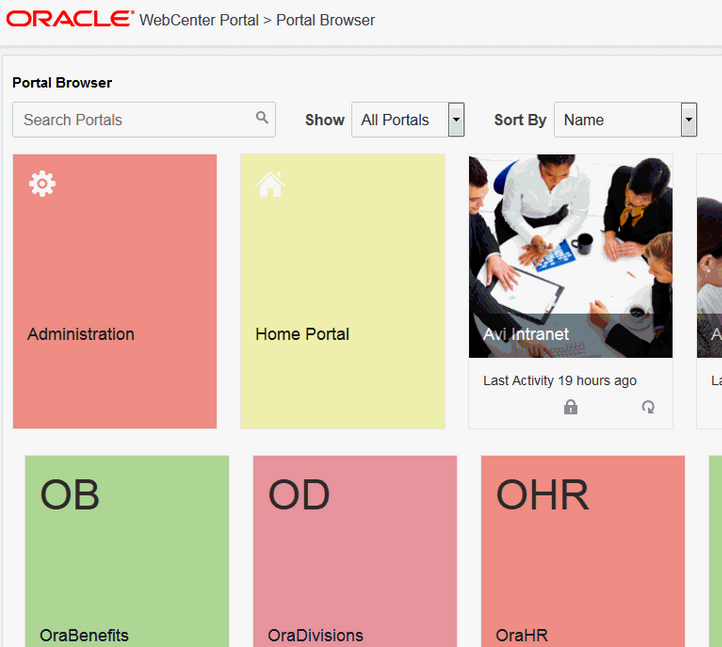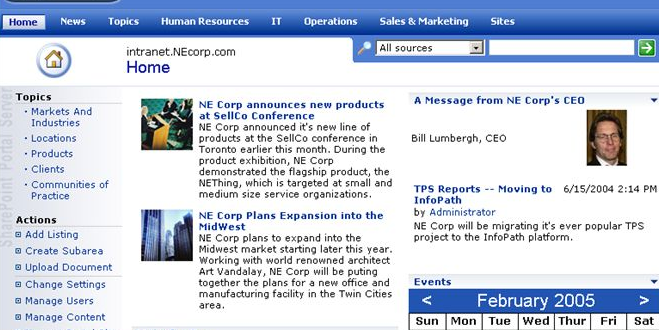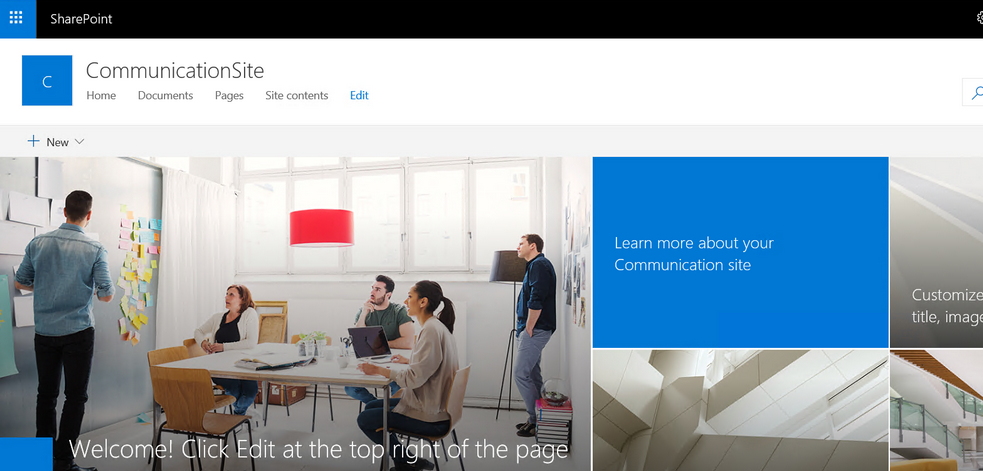
What is a WebCenter Portal?
What is a WebCenter Portal?
What is a WebCenter Portal?
I was recently hired to work with a company on a project related to something called Oracle WebCenter Portal.
To be honest, I’d never really heard of the product, however, if the employer is willing to take a chance on me, then I’m sure willing to dive in and try to add value as soon as possible.
I like learning new things…
As it happens, one of the things I enjoy most in any role, is the opportunity to learn and develop, to grow, to acquire new skills, new knowledge and to have that feeling of moving forward. So in a way, a job that requires me to know a new system (to me) is the perfect job, but most jobs require you to already have some starting knowledge and usually more than starting knowledge, therefore those opportunities to learn something from scratch, well they are few and far between.
Why me?
If I am honest, I genuinely don’t know, I actually thought I was being hired to work on SharePoint. It seems my eagerness to dive in and my varied background may have suggested I have an ability to learn new things (new to me).
For me, an added challenge is that the company have been selling solutions built on the back of WebCenter Portal for 20-25 years, over that time people have been responsible for parts, they’ve moved on either internally or to new employers and as a result we have all of this legacy without any direct link to how some of these portals started. Therefore my role is to come in, learn the product, deal with new portal requests and more importantly, help the company migrate from older versions of the portals to portals built on the latest standard release.
New to me
I have used that term a couple of times already and that’s because the WebCenter Portals environment is new to me but it is not a new product. In fact, I believe my confusion around the role comes from the fact that when the talent team contacted me about this particular role, they described it as being a SharePoint like role.
What does that mean? Well, from what I can tell, Oracle WebCenter Portals beat SharePoint to market. The Portals product existed sometime before SharePoint was a thing.
When I first saw the WebCenter Portals environment, I thought it was just an uggly copy of SharePoint, but as I’ve learned a little more, I now realise that the Oracle product beat the Microsoft product to market, however, where the Microsoft product has developed hugely over the last 20 years, the Oracle product seems to be stuck in the past. That may not be fair, it may be that we don’t know how to make it look as pretty as a SharePoint product, but from what I’ve seen so far, it is like using an older version of SharePoint, maybe even worse, depending on your viewpoint.
Below are a couple of images from around 2005.
SharePoint 2003 (before it was called SharePoint):

WebCenter Portalls 11g:

And a couple of images showing newish SharePoint and newest WebCenter Portals.
SharePoint 2019:

WebCenter Portalls 14c:

SharePoint isn’t pretty
I wanted to add that line because, no, SharePoint is not pretty, but there is not pretty and there is not pretty…
However, more importantly, I think it is important to consider how much SharePoint has evolved over the years (visually) vs WebCenter Portals. Of the images included above, there are indeed differences, but they are not as significant as you may first think.
An OVA File
I don’t know how important the Webcenter Portal product is to Oracle, but over the years, they have provided a few pre-built WebCenter Portal environments in the form of an ova file that can be freely downloaded.
This Open Virtual Archive file is a file format that can be fed into a Hypervisor so that you basically have a prebuilt Virtual Machine. This is a brilliant service from Oracle, but there are some issues.
Firstly, as they get to the end of life, instead of keeping it online for future system admins to find, they simply point the admins at the latest version. This is both a good and a bad move. Good because, they are automatically shifting the traffic to what they believe will be the right place. Bad because sometimes you need or at least want to have access to that older version.
For example, we have portals built in Portal 11g, there are several references to an 11g .ova file, but clicking on any of those links will instead take you to a Portal 12c .ova file. This further complicates things because the 12c .ova file was released in 2015 which means that even when you do download and open this .ova file, you end up with a system that doesn’t work as well today as it did in 2015 due to all sorts of issues mostly related to date, for example, SSL Certificates have long since expired.
So whilst this is a brilliant place to start your WebCenter Portals journey, you quickly realise you need to build something else with some newer technologies so that you can better simulate the environment you are working in today. Oh and, for me, I also need to build some older environments to be sure I can replicate what happens when you try to upgrade them etc.
14c…
This might not mean much to most people, but as I mentioned above, the current latest release of the .ova file is based on WebCenter Portal 12c. However, 14c is the version we should be building today, we’re planning for it, but it’s not the thing we use at the time of writing. I am expecting (or at least hoping) Oracle will release a .ova file based on 14c, probably sometime in 2025.
Oracle Database
The WebCenter product, at least in my environment, is built on the back of an Oracle Database, I have to admit that this is the hardest thing to deal with. From an infrastructure point of view, the Database is always a highly controlled part of the infrastructure, meaning that there are a lot of things that get stuck in the system as we await the support of our dba colleagues. From a lab and testing point of view, the database falls to me and I am not much quicker than my infrastructure colleagues. The difference is that I’m slow because I have no idea what I am doing…
Oracle Linux
We also depend on Oracle Linux in our production environment, a place I enjoy working. For the lab environment, this is without a doubt, my favourite aspect. That said, I have realised that after a few years working inside MacOS primarily, I have forgotton a few tricks and the tricks I do remember don’t always work, so this is more learning, and for me, this is more enjoyment.
Oracle Fusion Middleware
Fusion Middleware or FMW is like the glue that ties the front-end to the database. I suppose in a PHP web application, you might consider AlpineJS as the User facing tier, PHP as the middle-tier and the database as the back-end. I’m probably screwing those terms up, but if I imagine a three-tier environment, that is how I’d picture it.
In WebCenter Portals, that front-end would be the Portals and Fusion Middleware would be the middle tier, with the database holding the sqame role as with a PHP web application.
So to consider FMW further, well, I don’t know what to say about it, in one sense, it is quite complicated, but a lot of that complexity is hidden when in the administrative role. Setting a WebCenter Portal environment up, building my own lab(s), FMW is tricky, though nothing compares to getting a database to work the same way each time, I am definitely getting something wrong in my database builds, so that might be a primary cause of my issues.
Lab vs Production
At the moment, I spend most of my time working in lab environments, and the plural is key here. I have built and splatted so many labs in the last couple of months, I should be getting pretty sharp at this, but there are so many variables to test, to get on top of and of course, I have complicated a few of my builds with a shonky database installation, setup or other.
Ultimately I need to simulate various environments that, in some cases, might be 25 years old. That doesn’t mean they are built on 25 year old hardware or software, but the way we built and delivered these things 25 years ago was different to how we did it 5 years ago, 10 years ago and different again for the most recent portals. So I am building several versions of portals, sometimes using current best practice, sometimes finding my way and sometimes using older internal documentation if it exists at all.
It has been a ride for sure, but as I mentioned earlier in the blog post, getting to learn things (that are new to me) and getting to dig deeper and to really try and understand something, these are the bits I enjoy about any job I have had so far, so there are challenges, it is ugly, but I quite like it.
I will leave the blog post there for now, I plan to write more in the future about just what we might be able to do with a Portal, but I still have a lot to learn before I could go too deep on that subject.
